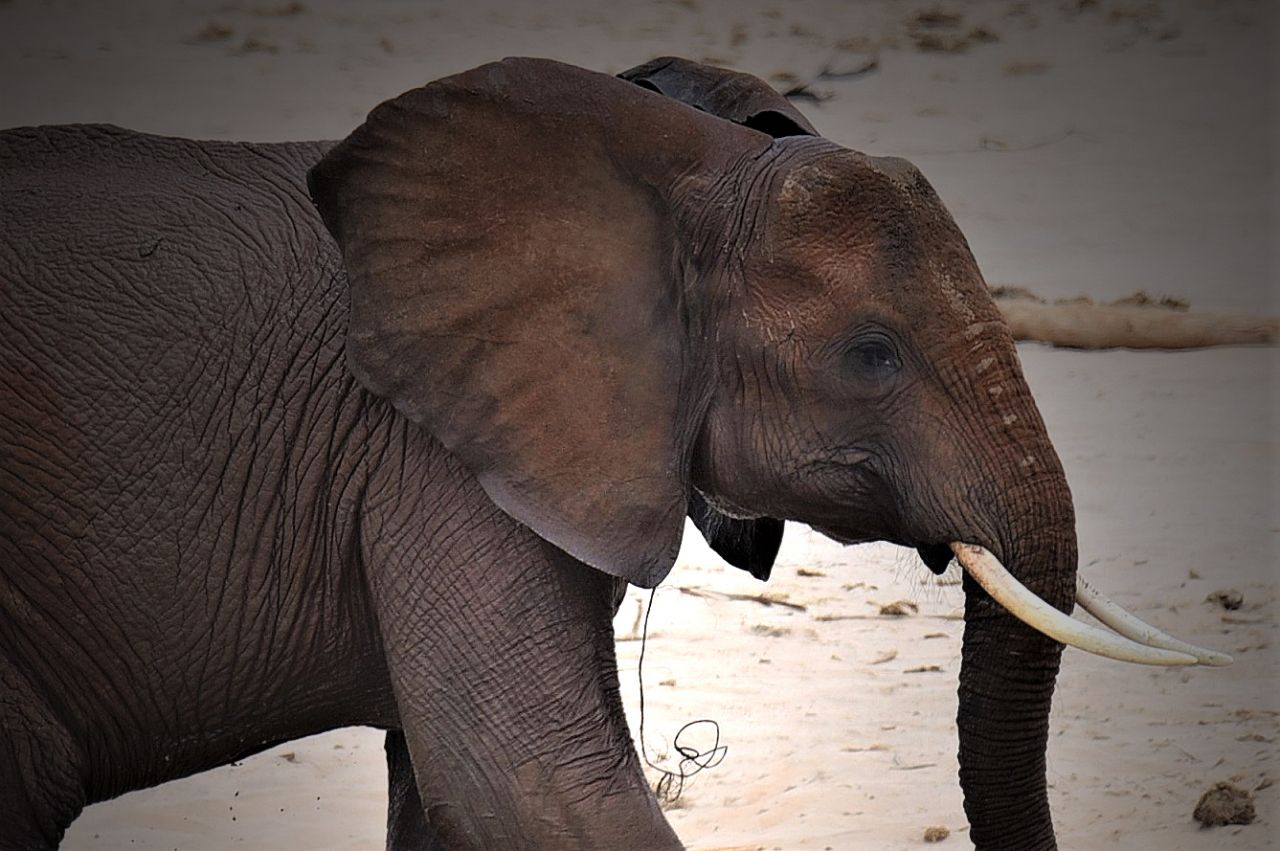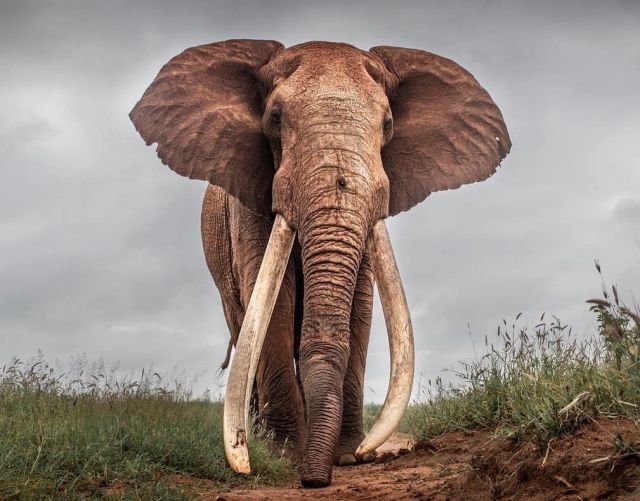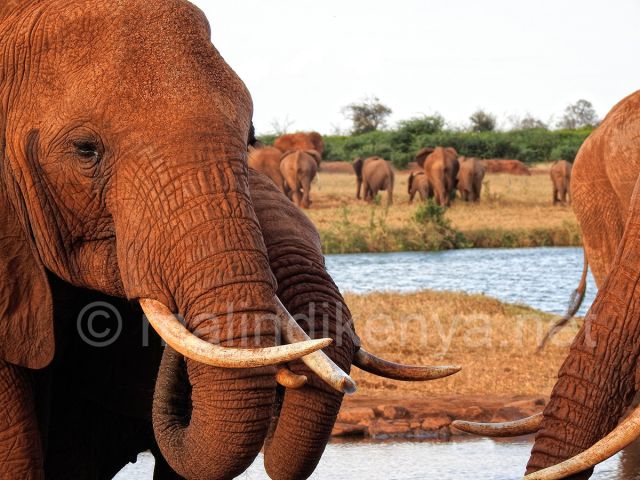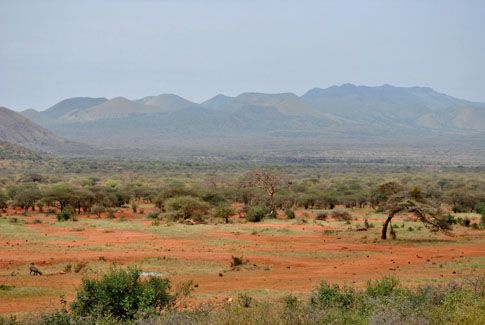
TSAVO FRIENDS
29-02-2020 by Giovanna Grampa

Elephants are animals with unique characteristics and every day they surprise us with their intelligence and sensitivity.
When you begin to observe them more carefully you realize that many of their behaviors, apparently, are not irrelevant at all but are always full of meaning, even capable of asking for help from man.
I don't want to create the impression of having some mystical connection with these splendid pachyderms, but I know, from experience, that they can communicate their problems in extreme cases.
A matriarch with her nervous barrels reported us an elephant trapped in a pool of muddy water.
A young elephant with a serious infection on one of its front legs was photographed on the side of the road, staring at us with a begging look and highlighting its problem.
An adult male detached himself from his family and was drinking at a puddle, approaching our car to show us his round tusk so abnormal that the toe was growing under his left eye entering the flesh, causing deep pain.
Animals who would not have survived if they had not been able to communicate with us, sure that we would have activated the rescue services to help them.
It is the passion that always pushes me not to be conditioned by the reductionism of ethologists: living "inside nature" teaches you that an elephant not only communicates with the other members of the group but is able to feel empathy and with the experience you develop "the eye of the savannah", the ability to sense if something is wrong.
And a few days ago another elephant asked us for help with a really serious problem: a neck lace, a death trap that would have condemned him to atrocious suffering.
For over two weeks along the Galana river, in the Tsavo East park, numerous families of elephants have been living in a bight where the water flows quietly between the banks rich in green and luxuriant vegetation: an elephant paradise also for the many playful and restless cubs, but it's a feast for everyone. The herds mingle with each other, many elephants play in the water between large splashes, others with slow movements collect soil with the trunk to take a nice bath of dust, others descend from a slope direct to the water, fast with their supple and trotting gait shaking their heads and making the wrinkled trunk vibrate in anticipation of the fresh and fresh river water.
But between them a young female remains behind and detached from the herd: she stops to stare at us with her immobile gaze. She is not so close that we can observe her better with binoculars and we remain petrified to see a large iron wire hanging from her neck for a length of about one meter, tangled in the final part and partially hidden by the trunk. The elephant girl slowly turns her head, looks for us with her small eyes and shakes her trunk to smell us. She puts herself in profile and as she widens her big ears we notice that the lace has caused more than one deep furrow in the skin and all around there is some clotted blood, an unequivocal sign that the poor animal has tried several times to get rid of the wire that was strangling it. These are traps made with very strong steel cables often laid between the trees along the elephant's passage paths or near water springs. The method is very simple and the trapped animals, in an attempt to free themselves, get deep wounds, even fatal for infection. Unfortunately, there are poachers who pay the local "branch experts" to set these traps and kill the elephants: a silent slaughter! The extent of the wounds is horrible and the agony endured unspeakable; it is incredible what horrible man can inflict on such a wonderful creature. The animals panic when they are caught by the string and keep pulling towards the wire, making it tighter and tighter. If the string is around the neck and the thread is strong enough the animal can die even choking to death.
Our young female has partly managed to break the trap but not to free herself from the steel wire so we take a few photos, accompanied by GPS coordinates, which we immediately send to DSWT (David Sheldrick Wildlife Trust), the only organization that has means and men ready to intervene in a short time. From Nairobi they authorize the rescue operation with a helicopter and a mobile unit that, just one hour after our signal, arrive on site. The elephant is detected and separated from the group to be anaesthetised. Without intervention the poor animal would have died of septicaemia in a short time, condemned to a long and exhausting agony. After the lace is removed, the wounds are cleaned, infused with a disinfectant and spread with a long-acting antibiotic.
The treatment is fully successful and the antidote for waking up from the anesthesia is injected. A few minutes and the elephant starts to move with difficulty trying to stand up. We see her get up slowly and immediately afterwards she walks a bit dazed trying to reunite, albeit with difficulty, with her family. She is safe and soon, according to the vet Dr. Poghon who performed the operation, she will recover perfectly and regain all her strength.
These majestic mammals, tame inhabitants of the savannah, are unfortunately often victims of the cruelty of men who massacre them to obtain ivory without understanding that wonderful beings are leading towards extinction. The savannah needs us, all of us, our support and our respect because without elephants it would no longer be our true Africa!
WILDLIFE
by Leni Frau

He was one of Tsavo's "Super Tuskers." Lugard, an iconic elephant with huge tusks and regal bearing, also...
RESERVES
by Leni Frau

The Kibwezi Forest Reserve, established in 1936, is one of Kenya's last rainforests...
ITALY
by redazione

The Friends of Tsavo back in Italian schools to raise awareness among young people about the protection of the animals of the African reserves and to promote the good side of the Black Continent, the least publicized by the media...
TRAVELS
by Leni Frau

Tsavo National Park has been listed by the prestigious US newspaper New York Times as one of the...
NEWS
by redazione

The sadness is deep for fans of the savannah that after so many safari, had learned to recognize it.
Satao II, one of the few remaining elephants by the giant tusks in Kenya, the "big tuskers" (estimated there would be no...
NEWS
by redazione

Progress for the tarmac of the road that leads to the entrance hall from Malindi Gate of Tsavo East National Park.
After the stretch from Malindi to the village of Ganda they have been leveled and are now in very good...
ENVIRONMENT
by redazione

The efforts made so far to ensure water to Tsavo National Park and its ecosystem may not be enough.
The closest savannah to the Kenya coast threatens to extinction in 15 years unless seriously created irrigation systems and new dams.